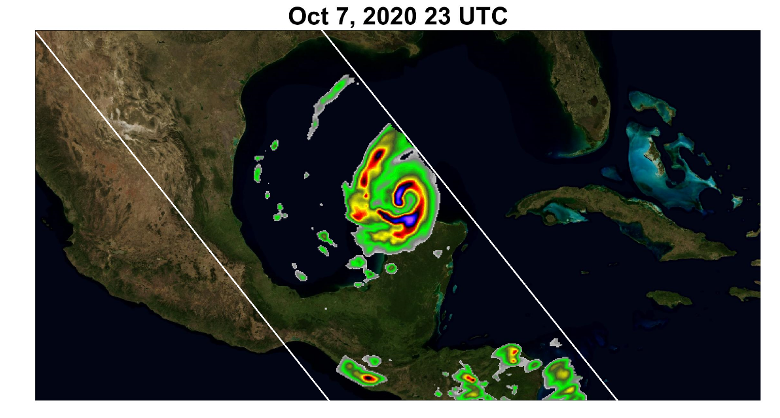Small Spacecraft Activities Around the Agency Archive
Highlights for December 2020
NASA Headquarters
A Small Satellite With Planetary Ambitions
CubeSat Particle Aggregation and Collision Experiment, or Q-PACE
A NASA-sponsored team at the University of Central Florida (UCF) has built a small satellite designed to study how tiny particles collide and aggregate in microgravity. The spacecraft, called the CubeSat Particle Aggregation and Collision Experiment, or Q-PACE, has been integrated onto Virgin Orbit’s LauncherOne space vehicle, and is scheduled for launch no earlier than December 8, 2020. Q-PACE is part of NASA’s Educational Launch of Nanosatellites (ELaNa) program. The mission was selected in 2015 as part of NASA’s Small Innovative Missions for Planetary Exploration (SIMPLEx) Program.
NASA’s Goddard Space Flight Center / Wallops Flight Facility
HaloSat is the first astrophysics-focused CubeSat mission funded by NASA’s Astrophysics Division. HaloSat’s scientific goal is to constrain the mass and spatial distribution of hot gas associated with the Milky Way by mapping soft X-ray line emission from highly ionized oxygen in order to determine if hot halos associated with individual galaxies make a significant contribution to the cosmological baryon budget. Phil Kaaret from the University of Iowa is the principal investigator and NASA’s Wallops Flight Facility provided mission management and systems engineering.
The Small Satellite Project Office at NASA’s Goddard Space Flight Center is organizing and conducting a series of seminar presentations in 2020 to bring industry awareness to NASA scientists, engineers, and managers. It is primarily focused on entire SmallSat mission or bus solutions with occasional SmallSat special topics such as safety and mission assurance best practices. To join the seminar as a presenter or attendee, please contact Luis.H.Santos@nasa.gov to review your products and services as a presenter or to be added to the invitations distribution list as an attendee.
NASA’s Kennedy Space Center / CubeSat Launch Initiative
NASA’s CubeSat Launch Initiative (CSLI) continues to assist numerous academic and agency CubeSat teams adversely affected by the COVID-19 pandemic by re-manifesting CubeSats on alternate flights. To date, 112 CSLI-selected CubeSats have been launched and another 53 are manifested or on contract to fly within the next 18 months. Additionally, the 12th annual proposal solicitation cycle is underway, through which even more CubeSat teams will be selected in early 2021 for a ride to space. Read more about CSLI at the following links:
- https://tdglobal.ksc.nasa.gov/servlet/sm.web.Fetch/SP-2020-06-652-KSC_LSP_Info_Book_Small_Satellite_Missions_page.pdf?rhid=1003&did=49617&type=released
- https://www.nasa.gov/kennedy/launch-services-program/cubesat-launch-initiative/
NASA’s Jet Propulsion Laboratory
A number of missions continue to meet major milestones in their development.
Lunar Flashlight is conducting an end-to-end payload test with its flight lasers.
Lunar Trail Blazer passed its preliminary design review and received approval from NASA’s Jet Propulsion Laboratory directorate management Council.
The SunRISE project successfully held its preliminary mission and system review.
NASA’s Glenn Research Center
NASA’s Glenn Research Center presented a paper at this year’s Small Satellite Conference entitled, “Advanced eLectrical Bus (ALBus) CubeSat: From Build to Flight”. The project was a technology demonstration mission of a 3-U CubeSat with an advanced, digitally controlled electrical power system capability and novel use of Shape Memory Alloy (SMA) technology for reliable deployable solar array mechanisms. The project launched as part of the CubeSat Launch Initiative Educational Launch of Nanosatellites (ELaNa) XIX mission on Rocket Lab’s Electron in December 2018. The paper summarized the final launched design of ALBus and lessons learned from the technology and overall project from development through flight.
NASA’s Johnson Space Center
Seeker 1 was a 3U CubeSat that demonstrated the first step of a new development paradigm for small spacecraft, specifically for extravehicular in-space inspection. Seeker 1 was designed, built, tested, and delivered within approximately 18 months of receiving authority to proceed and within its $1.8M budget. The CubeSat launched onboard the NG-11 Cygnus vehicle (Northrop Grumman resupply spacecraft) in April 2019 and deployed from Cygnus in September after it had completed its International Space Station mission, demonstrating many of the fundamental technologies required for in-space inspection. Seeker 1 completed 6 degrees of freedom control via 12 cold gas thrusters; was highly automated; performed all computation onboard the vehicle; and used a neural network for vision-based navigation. The Seeker project is continuing to look for opportunities to partner with others to advance in-space inspection capabilities.






























